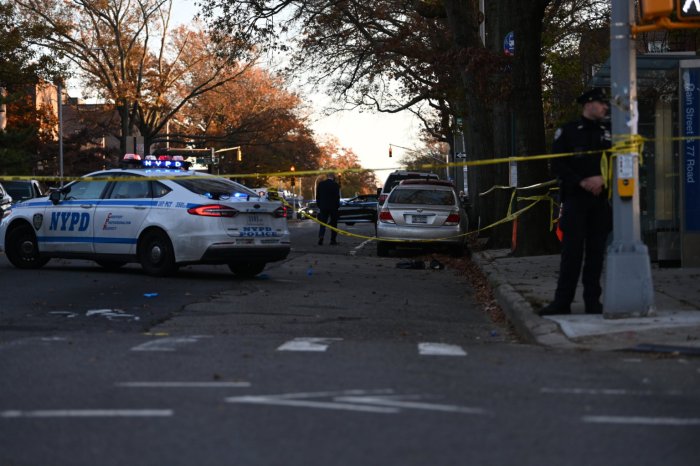By Bob Harris
We are in a new century, have a new mayor and again are going through our seemingly continuous flagellation of ourselves over the quality of the schools caused by our chancellor. Using some old clippings about the schools, I will present a few articles full of complaints. In next week’s column I will give some possible solutions to make our schools better.
In the May 17, 1963 World Telegram & Sun, Superintendent of Schools Calvin E. Gross (I guess they changed the title to “chancellor” as a way to solve the problems)gave his plans to solve the problems by shaking up the system and decentralizing the schools. He talked about stopping dropouts, solving the integration problem, increasing reading and something about frills which I didn’t understand. He also proposed that teachers working in groups could figure out ways to teach in “difficult” areas, and to help the average child. I think the United Federation of Teachers is solving the latter problem.
A headline in the March 3, 1965 Herald Tribune trumpeted, “School Board Calls for Gross Ouster.” They wanted to fire him from his $45,000 position for lack of effective leadership and delaying decisions. They said he didn’t create a fresh integration plan or a needed decentralization plan to break up the unwieldy million pupil system or appoint a deputy superintendent. There was a school boycott taking place led by the Rev. Milton A. Galamison.
On March 5, 1965 the Herald Tribune headline reported that, “It Could Only Happen Here—Two School Superintendents.” The school board had directed Gross to take a three-month leave-of-absence, without pay, and asked Bernard E. Donovan to be acting superintendent.
On May 2, 1965 The New York Times trumpeted “Close to Midnight for the New York Schools.” On June 11, 1965 the World Telegram & Sun asked, “Who’s to Blame for Dropouts?” On Feb. 13, 1966 Fred M. Hechinger titled his article in the New York Times, “Toward Better Teaching in Slums.” Donovan’s special committee had issued a report that rejected forced rotation of teachers and special salaries, which would have rewarded teachers who worked in difficult schools. He commented that the Peace Corps puts new teachers into difficult situations. This sounds good, but Peace Corps members volunteer for their areas. Although it was never approved in the past, we finally have put new teachers in the chancellor’s special schools, given them higher salaries and paid for their needed advanced college.
On Sept. 25, 1967 Newsweek featured several students on its cover with the words, “The School Crisis.” At this time most of the New York City teachers, as well as teachers in other cities across the nation, were on strike. At issue were salary raises and a special panel to evict “disruptive” children from classrooms and place them in special “600 Schools,” which were smaller than regular schools and were designed with more personnel to better focus on the children’s special needs.
Mixed in with these issues was the pressure of parents with children in “ghetto” schools to get better education for their children. In the article there was a paragraph which mentioned a survey in Grade Teacher Magazine saying that most graduates from the previous June were more interested in pay than an exacting career. Only 23 percent said that professional challenge was important and only 13 percent planned to teach in inner-city schools.
On Oct. 4, 1967, the usual sensational huge headlines screamed across the front page of the Daily News, “Special Report: Classrooms In Crisis.” On Feb. 14, 1968 The New York Times headline stated “Donovan Proposed Racial Rezoning in Queens.” All the Queens high schools were listed with the percent of minorities and the percent of others. The minority students comprised about 20 to 25 percent of the students in those days.
On Oct. 25, 1971 and Oct. 30, 1971 the Long Island Press had the headlines, “Our Failing Schools: Poor Quality of Education-A Mounting Problem for Society” and “The Education Gap: Poor Schools Get Poorer, Rich Schools Get Richer.”
Enough headlines. I guess you got the point I am trying to make.
(Next Week-Solutions Past & Present)





























